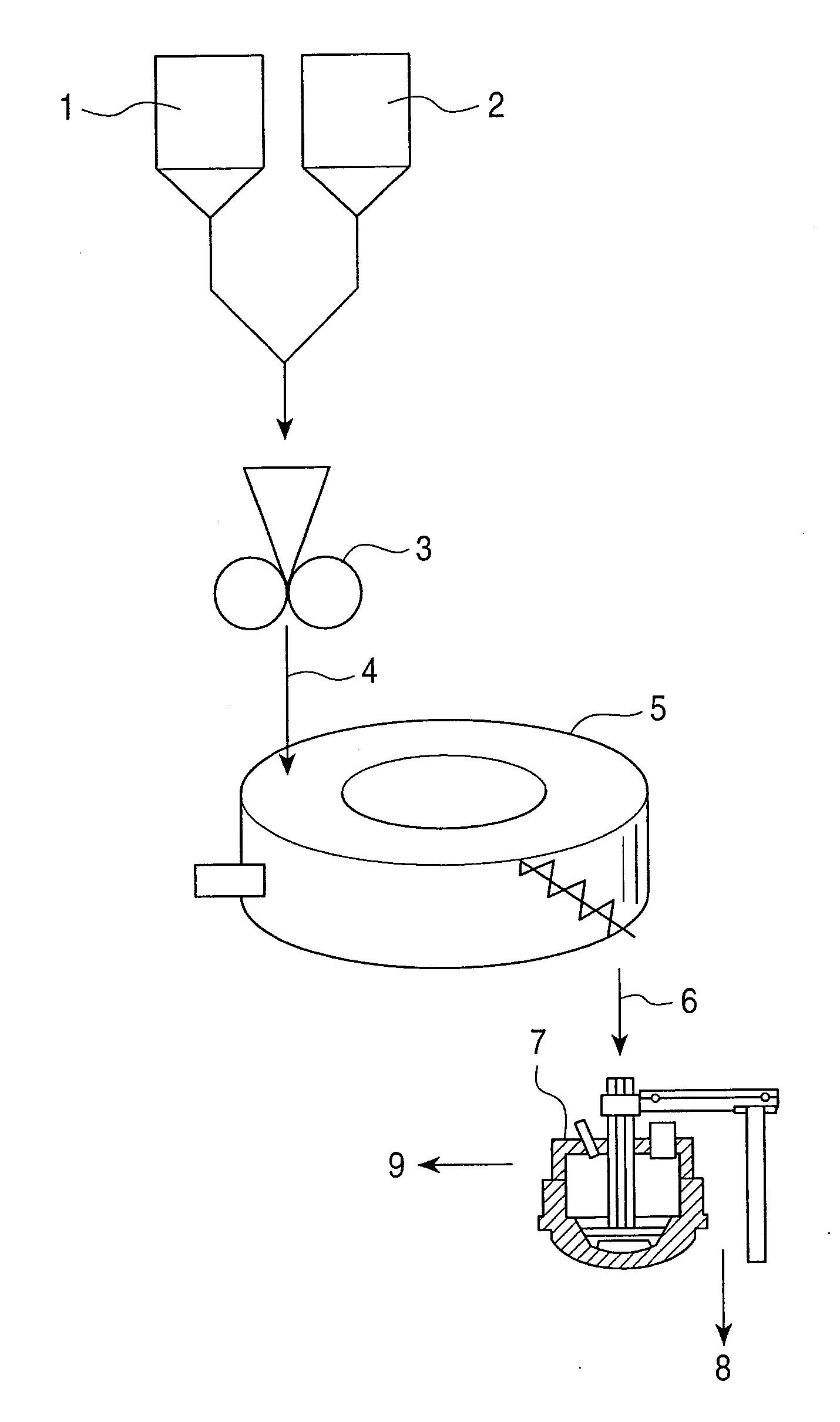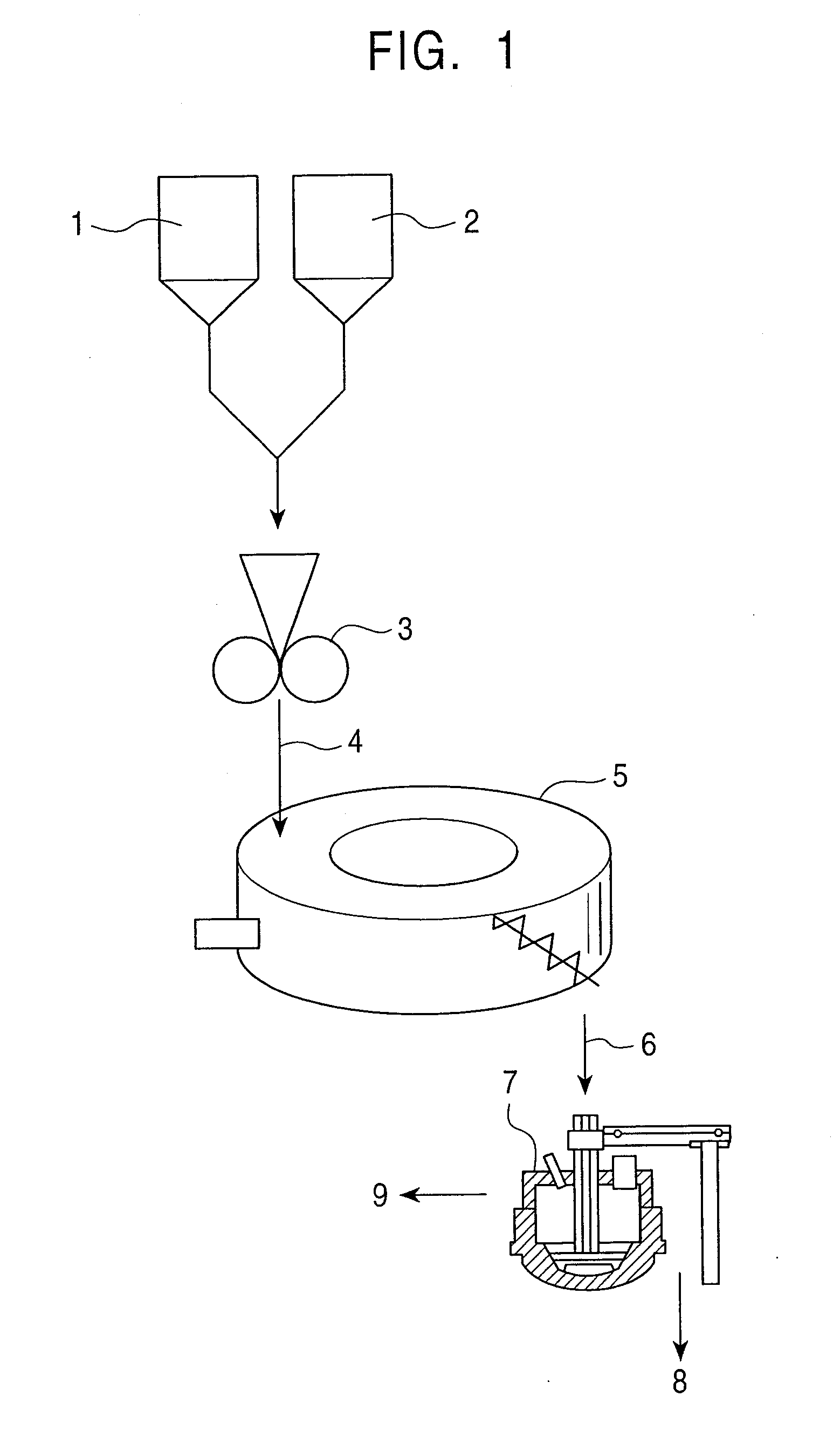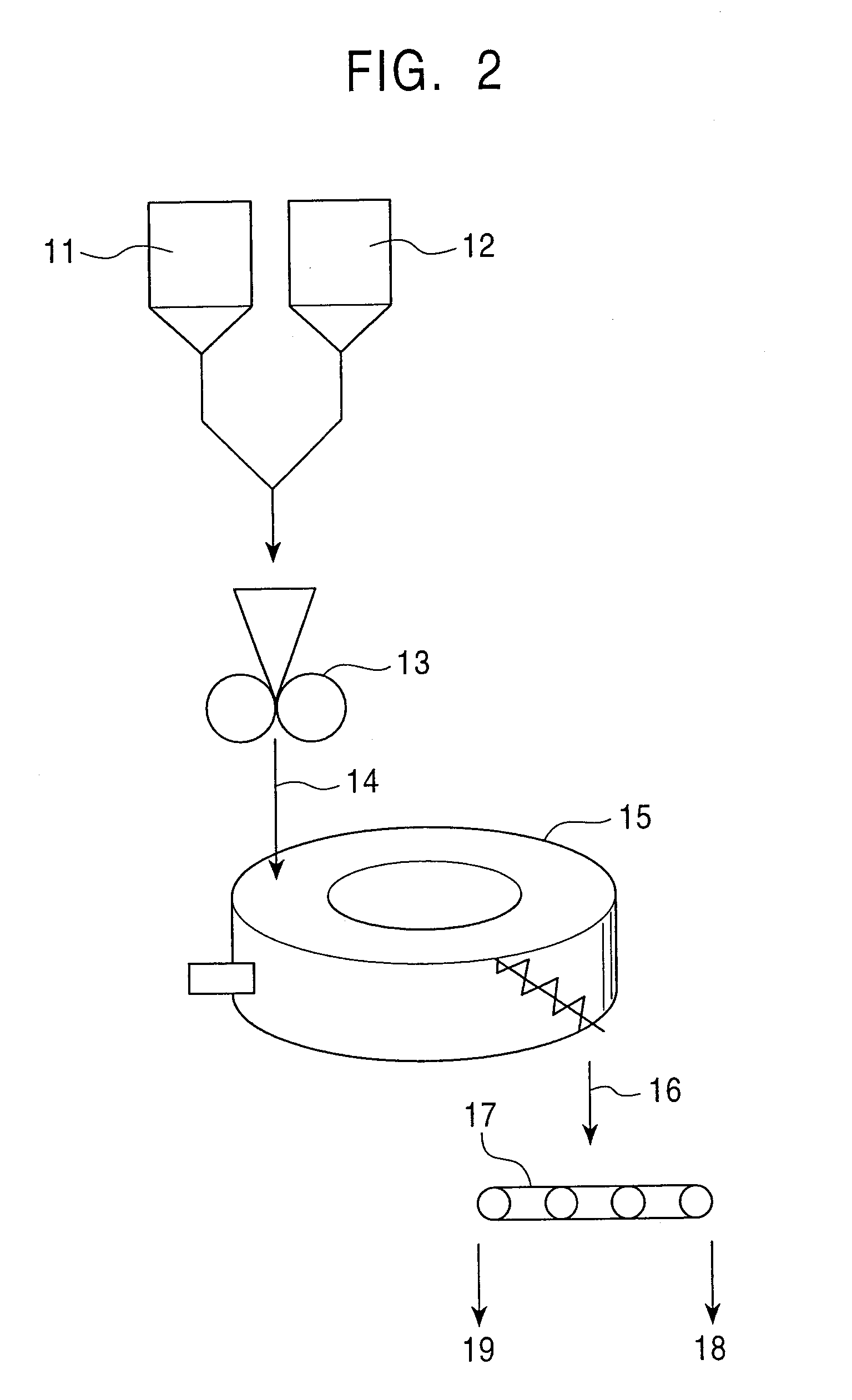Method for reducing chromium containing raw material
a technology of chromium containing raw materials and methods, which is applied in the direction of furnaces, electric furnaces, furnace types, etc., can solve the problems of high fuel consumption, excessive length of rotary kilns, anddam rings, so as to prevent the reoxidation of the reduced mixture and reduce the fuel consumption
- Summary
- Abstract
- Description
- Claims
- Application Information
AI Technical Summary
Benefits of technology
Problems solved by technology
Method used
Image
Examples
first embodiment
[0033]FIG. 1 is a schematic diagram of a process according to an embodiment of the present invention. Reference numeral 1 indicates a storage container for a chromium-containing material containing chromium oxide and iron oxide (or the chromium-containing material); reference numeral 2 indicates a storage container for a carbonaceous reductant; reference numeral 3 indicates a granulator; reference numeral 4 indicates a charging path for a mixture (agglomerates) fed from the granulator 3; reference numeral 5 indicates a moving hearth furnace; reference numeral 6 indicates a transfer path for a reduced mixture (preferably, in the form of agglomerates); reference numeral 7 indicates a smelting furnace; reference numeral8 indicates a path for recovered metal; and reference numeral 9 indicates a path for removed slag.
[0034]The chromium-containing material 1 used may be chromium ore or residues produced in the manufacturing process of ferrochromium, including dust and slag produced at fer...
second embodiment
[0055]FIG. 2 is a flow chart including a step of reducing a chromium-containing material according to another embodiment of the present invention. In FIG. 2, reference numeral 11 indicates a storage container for a chromium-containing material containing chromium oxide and iron oxide; reference numeral 12 indicates a storage container for a carbonaceous reductant; reference numeral 13 indicates a granulator; reference numeral 14 indicates a path for a mixture (agglomerates); reference numeral 15 indicates a moving hearth furnace; reference numeral 16 indicates a path for a recovered reduced solid; reference numeral 17 indicates a screen; reference numeral 18 indicates a metal path (or metal); and reference numeral 19 indicates a slag path (or slag).
[0056]The chromium-containing material, the carbonaceous reductant, the granulator, the feedstock mixture (agglomerates), the moving hearth furnace, and the mixing step in the second embodiment are the same as those in the first embodimen...
example 1
[0065]The following reduction experiment was conducted with a small heating furnace for laboratory use to grasp the reduction condition of a mixture in a moving hearth furnace according to the present invention.
[0066]A feedstock having a composition shown in Table 1, as the chromium-containing material, and coke breeze (fixed carbon content: 77.7 percent by mass), as the carbonaceous reductant, were mixed at a mass ratio of 85.7:14.3. A proper amount of water was added to the mixture, which was then granulated with a small disc pelletizer to prepare pellets having a diameter of 13 mm. These pellets were dried, were charged in batches into the small heating furnace, and were heated and reduced at a constant temperature for different retention times. The compositions of the pellets after the reduction were chemically analyzed to determine their Cr reduction degrees and Fe metallization degrees. This experiment was conducted in a nitrogen atmosphere at 1,200° C. and 1,300° C.
TABLE 1T. ...
PUM
| Property | Measurement | Unit |
|---|---|---|
| particle diameter | aaaaa | aaaaa |
| thickness | aaaaa | aaaaa |
| temperature | aaaaa | aaaaa |
Abstract
Description
Claims
Application Information
 Login to View More
Login to View More - R&D
- Intellectual Property
- Life Sciences
- Materials
- Tech Scout
- Unparalleled Data Quality
- Higher Quality Content
- 60% Fewer Hallucinations
Browse by: Latest US Patents, China's latest patents, Technical Efficacy Thesaurus, Application Domain, Technology Topic, Popular Technical Reports.
© 2025 PatSnap. All rights reserved.Legal|Privacy policy|Modern Slavery Act Transparency Statement|Sitemap|About US| Contact US: help@patsnap.com



